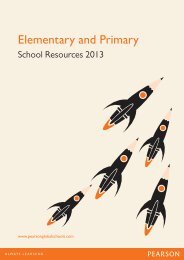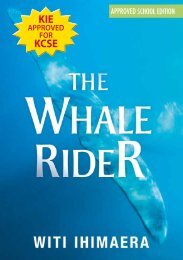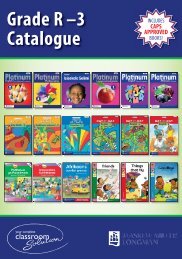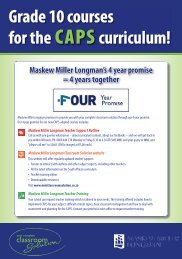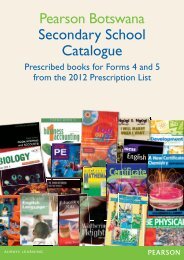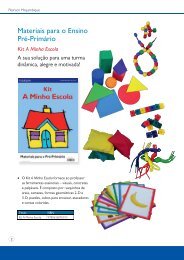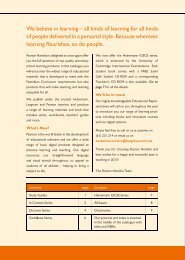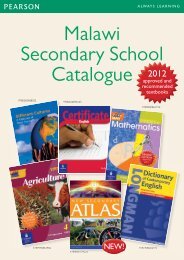New Windmills - Pearson
New Windmills - Pearson
New Windmills - Pearson
Create successful ePaper yourself
Turn your PDF publications into a flip-book with our unique Google optimized e-Paper software.
Geography Ages 14-16 UK Years 10-11 US Grades 9-10<br />
Edexcel International GCSE and<br />
<br />
Edexcel’s own resource for the<br />
<br />
<br />
What’s online?<br />
new for 2013<br />
Revision Guide for<br />
Geography!<br />
This book provides complete coverage of the latest GCSE and Certificate in Geography<br />
specification. It is written by Steve Milner and Mike Witherick, who are highly experienced<br />
geography teachers and examiners.<br />
The Student Book contains up-to-date information and statistics and current case studies taken<br />
from a wide variety of international contexts.<br />
Contains a free ActiveBook CD-ROM with a digital version of the Student Book, Geography<br />
animations, PowerPoint presentations, a range of revision resources, fieldwork opportunities<br />
and past questions.<br />
Answers to Student Book questions available at www.pearsonglobalschools.com/<br />
edexceligcseanswers.<br />
Chapter 1: River environments<br />
Section A:<br />
The natural environment and people<br />
1.1 The hydrological cycle<br />
Fresh water is essential for life on Earth. This water is<br />
constantly being recycled as it moves through a cycle known<br />
as the hydrological cycle or water cycle. This is a global<br />
circulation of water − it is a giant closed system (Figure 1.1).<br />
This means that there is a fixed amount of water in the<br />
system because water neither enters nor leaves the Earth<br />
and its atmosphere.<br />
Introduction<br />
This chapter is about rivers. They are a vital part of the<br />
global circulation of water. They are responsible for the<br />
creation of landforms found throughout the world. They<br />
are valuable to us because they supply much of the water<br />
we use in our everyday lives. At the same time, because of<br />
the risk of flooding, they can become hazards that threaten<br />
people and their settlements.<br />
interception<br />
precipitation<br />
clouds<br />
snow<br />
ice sheet<br />
glacier<br />
condensation<br />
Chapter 1: River environments<br />
solar energy<br />
evapo-transpiration<br />
infiltration<br />
river<br />
surface run off<br />
percolation<br />
evaporation<br />
the sea<br />
Figure 1.1: Stores and flows in the hydrological cycle<br />
run off<br />
lake/freshwater<br />
surface store<br />
soil rock<br />
groundwater flow<br />
Key<br />
Stores<br />
During the hydrological cycle, water is held in a number of stores and then moves<br />
between them by means of a series of flows or transfers. The stores in the cycle are:<br />
<br />
<br />
the atmosphere – here the water exists either as water vapour or as minute<br />
droplets in clouds<br />
the land – here water is stored on the surface in rivers, lakes and reservoirs. Water<br />
is also taken in by plants and temporarily stored in vegetation. It is also stored below<br />
ground in the soil or bedrock. This is known as the groundwater store. Generally<br />
speaking, water exists in these stores in a liquid form. However, it can also exist in a<br />
solid form as snow and ice, as for example in ice sheets, glaciers and snowfields.<br />
Stores<br />
Flows (transfers)<br />
1<br />
Sample page from Edexcel International GCSE Geography Student Book<br />
85



